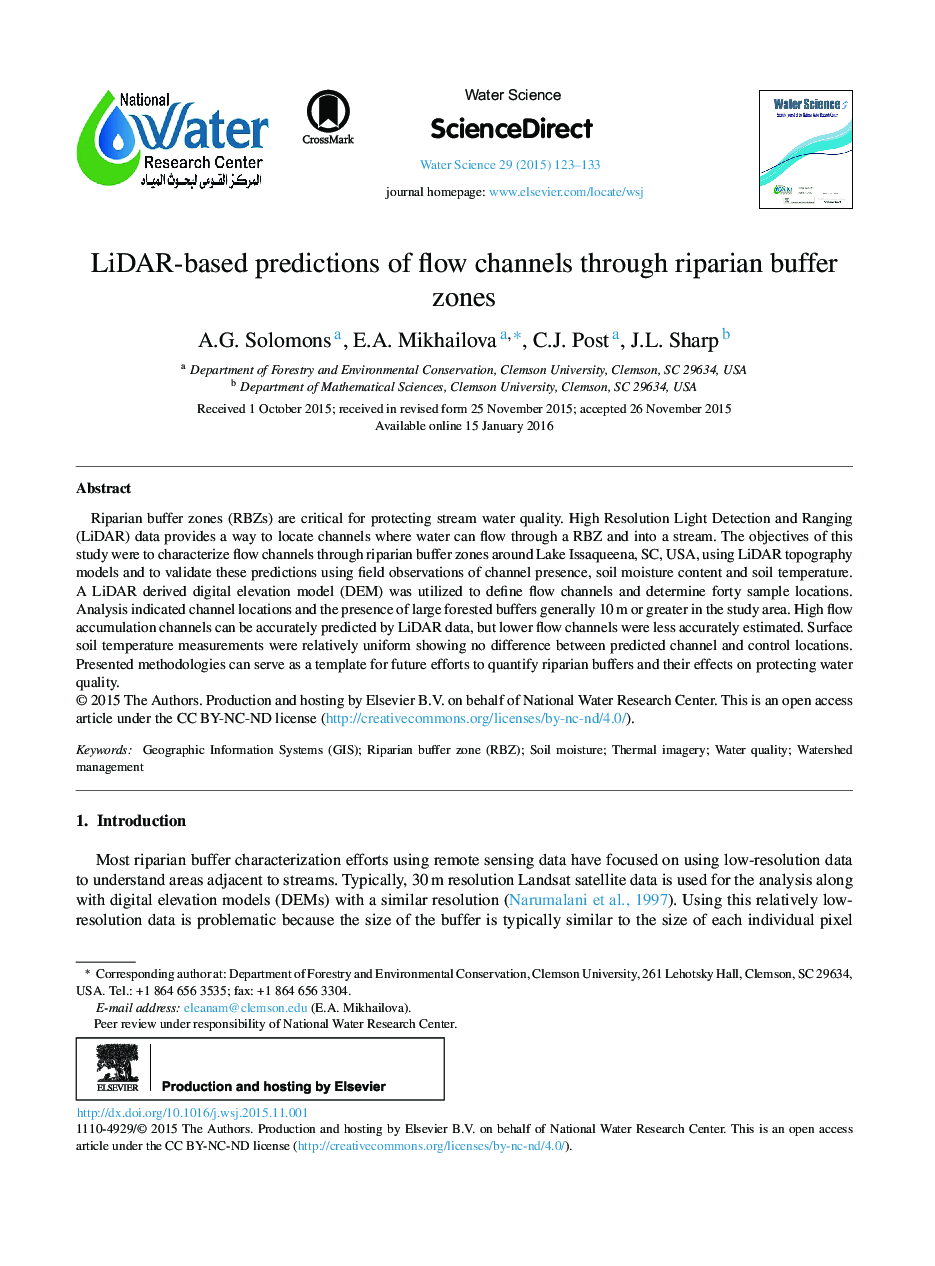| Article ID | Journal | Published Year | Pages | File Type |
|---|---|---|---|---|
| 866097 | Water Science | 2015 | 11 Pages |
Riparian buffer zones (RBZs) are critical for protecting stream water quality. High Resolution Light Detection and Ranging (LiDAR) data provides a way to locate channels where water can flow through a RBZ and into a stream. The objectives of this study were to characterize flow channels through riparian buffer zones around Lake Issaqueena, SC, USA, using LiDAR topography models and to validate these predictions using field observations of channel presence, soil moisture content and soil temperature. A LiDAR derived digital elevation model (DEM) was utilized to define flow channels and determine forty sample locations. Analysis indicated channel locations and the presence of large forested buffers generally 10 m or greater in the study area. High flow accumulation channels can be accurately predicted by LiDAR data, but lower flow channels were less accurately estimated. Surface soil temperature measurements were relatively uniform showing no difference between predicted channel and control locations. Presented methodologies can serve as a template for future efforts to quantify riparian buffers and their effects on protecting water quality.
